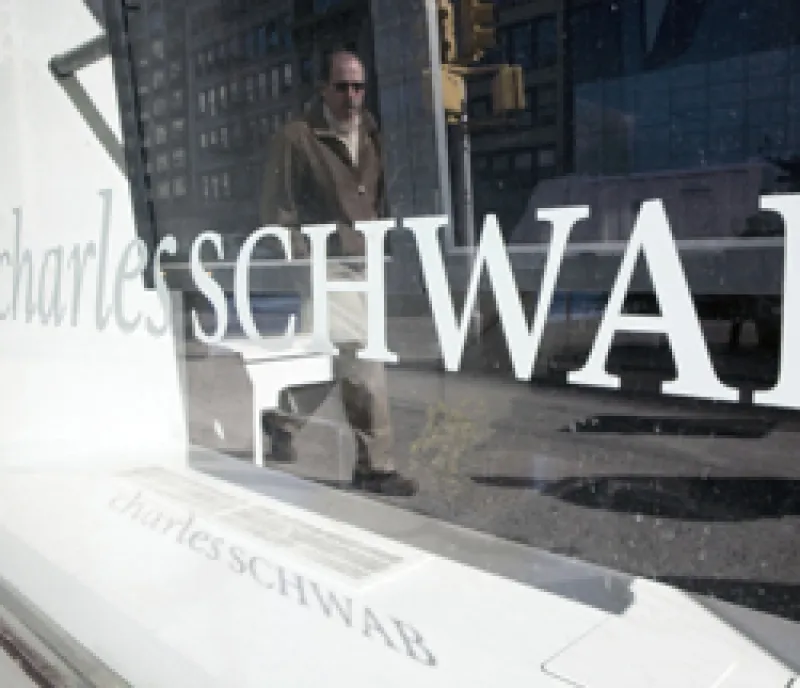The U.S. government’s focus on fund fees for retirement plans is opening participants’ eyes to a harsh reality: The plans they’re counting on to finance their golden years are gobbling up their savings. The moment has arrived for exchange-traded funds, which can lower 401(k) fees. “The main issue is expenses and fees,” says Francis Vitagliano, a consultant at Boston College’s Center for Retirement Research. In a recent paper co-authored with Zhenya Karamcheva and Richard Kopcke, two of his colleagues at the center, Vitagliano found that U.S. employees moving from defined benefit to defined contribution plans pay hefty investment-related expenses. Over a 30-year career, a typical 0.7 percent annual mutual fund fee shrinks the plan participant’s purchasing power at retirement by more than one eighth. Vitagliano expects that as fees become more transparent and public pressure mounts, plans will try to justify or reduce them.
The U.S. Department of Labor is helping things along. Last October it directed fiduciaries of participant-directed defined contribution plans to disclose total operating expenses, from management fees to recordkeeping costs, for each investment option offered. This figure must be a dollar amount for every $1,000 invested, so participants can see how much they’re paying annually. “The handwriting is on the wall,” says Robert Nestor, head of strategy and execution for the registered investment adviser and institutional businesses at iShares, asset manager BlackRock’s index-based ETF division.
With the consumer market primed for ETFs, providers are lining up. Defined contribution schemes hold $3 billion worth of New York–based BlackRock’s iShares, mainly in 401(k) plans. But by this time next year, the nation’s largest ETF provider expects to feed a $1 trillion market of lower-end defined contribution plans — those with assets of $50 million or less — through investment advisers.
And by early 2012, San Francisco–based retail giant Charles Schwab Corp., which has a family of ETFs, intends to offer 401(k) plans a platform of all-indexed ETFs that will come with investment advice. “Through lower investment cost and customized advice, we think we have an opportunity to dramatically change the competitive landscape,” says Schwab spokesman Greg Gable.
Alois Pirker, research director at Boston-based consulting firm Aite Group, thinks fee-sharing arrangements are the biggest obstacle to switching from mutual funds to ETFs. As Pirker notes, the parties that avail themselves of 401(k) fees include investment managers, plan administrators, plan advisers and sometimes plan sponsors. “It’s easy to distribute the fees on the mutual fund level, but fees on ETFs are too little to go around,” he says. When fees are cut back, a chain of intermediaries will feel the pain. Given the choice, though, it seems clear where investors will come down.
But in their enthusiasm, plan participants should be wary of a feature that will result in them paying more and making less on ETF trades. When the bank or brokerage for a 401(k) plan buys or sells ETF shares to move investors in or out of a fund, it incurs at least one type of trading cost. This cost, which is passed on to the investor, flies under the regulatory radar. “The costs are equal to the difference between the net price the investor pays and the NAV [net asset value] of the fund at the time of the transaction,” says Gary Gastineau, founder of Summit, New Jersey–based ETF Consultants.
The only accurate NAV measure is published at the end of the day, Gastineau adds. Advisers tend to execute ETF trades at the market-on-close price, which is usually higher than the NAV on a buy and lower on a sale. Gastineau proposes that the U.S. Securities and Exchange Commission approve NAV-based trading, whereby any investor or adviser can trade relative to each day’s NAV in a way that lets them control trading costs. “If you use the existing process, you can have your head handed to you on market-on-close ETF trades,” he says.
Plan participants can’t afford that mistake. The 2011 Retirement Confidence Survey, conducted by the Washington-based Employee Benefit Research Institute, found that workers are more pessimistic than ever. The number of respondents who were “not at all confident” about retirement jumped 5 percentage points from a year ago, to 27 percent, and only 13 percent were “very confident” of living out their later years in comfort. It follows that employees are looking to cut any losses from fees. • •






